-
 Bitcoin
Bitcoin $105,953.9980
3.06% -
 Ethereum
Ethereum $2,445.3292
6.68% -
 Tether USDt
Tether USDt $1.0006
-0.03% -
 XRP
XRP $2.1968
7.03% -
 BNB
BNB $643.2903
2.13% -
 Solana
Solana $144.2799
3.82% -
 USDC
USDC $1.0000
-0.03% -
 TRON
TRON $0.2739
0.49% -
 Dogecoin
Dogecoin $0.1642
4.47% -
 Cardano
Cardano $0.5834
5.49% -
 Hyperliquid
Hyperliquid $38.0741
2.80% -
 Sui
Sui $2.7741
7.56% -
 Chainlink
Chainlink $13.4107
11.26% -
 Bitcoin Cash
Bitcoin Cash $450.4828
-0.61% -
 UNUS SED LEO
UNUS SED LEO $9.1301
0.64% -
 Stellar
Stellar $0.2476
5.49% -
 Avalanche
Avalanche $18.0637
5.09% -
 Toncoin
Toncoin $2.9066
2.43% -
 Shiba Inu
Shiba Inu $0.0...01160
4.01% -
 Hedera
Hedera $0.1527
8.00% -
 Litecoin
Litecoin $84.6122
2.37% -
 Monero
Monero $317.6076
5.76% -
 Ethena USDe
Ethena USDe $1.0008
0.02% -
 Polkadot
Polkadot $3.4519
5.27% -
 Dai
Dai $1.0000
-0.03% -
 Bitget Token
Bitget Token $4.2835
5.62% -
 Uniswap
Uniswap $7.0443
9.78% -
 Pepe
Pepe $0.0...09964
7.41% -
 Pi
Pi $0.5391
4.64% -
 Aave
Aave $264.1743
11.26%
How to interpret the stochastic indicator being blunted for 5 consecutive days in the overbought area?
A blunted stochastic in overbought territory for 5 days suggests weakening momentum and possible consolidation or reversal in crypto trends.
Jun 25, 2025 at 03:00 am

Understanding the Stochastic Indicator in Cryptocurrency Trading
The stochastic indicator is a momentum oscillator widely used in technical analysis within the cryptocurrency market. It helps traders identify overbought and oversold conditions by comparing a particular closing price of an asset to a range of its prices over a certain period. The standard setting for the stochastic oscillator is 14 periods, with levels above 80 considered overbought and below 20 considered oversold.
In the context of cryptocurrencies like Bitcoin or Ethereum, which are known for their high volatility, the stochastic indicator can provide crucial insights into potential reversals or continuations of trends. However, interpreting it correctly requires understanding not just single readings but patterns over time, such as when the indicator remains blunted—meaning it stays flat or moves sideways—in the overbought area for multiple days.
What Does It Mean When the Stochastic Is Blunted?
A blunted stochastic indicator refers to a situation where both the %K (fast line) and %D (slow line) lines remain relatively flat in a specific zone—either overbought (>80) or oversold (<20)—for an extended period. This phenomenon often signals that the momentum has stalled, even though the price might still be rising or falling.
In the crypto market, this behavior can occur during strong uptrends where the price continues to push higher despite the stochastic being stuck in overbought territory. The flatness of the stochastic lines indicates that buying pressure isn't increasing anymore, suggesting a possible consolidation phase or an impending reversal.
Implications of Being Overbought for Five Consecutive Days
When the stochastic indicator remains above the 80 level for five consecutive days, especially if it's also blunted, several interpretations come into play:
- Extended Uptrend: The asset may have been in a strong upward movement, with buyers continuing to dominate the market.
- Potential Exhaustion: Despite the ongoing trend, the lack of momentum increase could signal weakening enthusiasm among buyers.
- Consolidation Phase: The market might be pausing before deciding on the next direction, which could be either continuation or reversal.
For instance, if Bitcoin’s price rises sharply over five days while the stochastic remains above 80 and shows little fluctuation, it suggests that although the trend is bullish, the energy behind the move is waning. This scenario is common in altcoin rallies following a major BTC breakout.
How to Visually Confirm a Blunted Stochastic in Overbought Zone
To confirm that the stochastic is indeed blunted in the overbought area, follow these steps:
- Check the Timeframe: Use a daily chart to analyze the last five trading days.
- Look at the Lines: Ensure both the %K and %D lines are moving horizontally or very minimally in the overbought region.
- Compare with Price Action: Observe whether the price is still rising or starting to flatten out.
If the price continues to rise while the stochastic remains flat in overbought territory, it indicates a divergence between price and momentum, which is a critical point for decision-making.
Strategies to Trade During This Scenario
Traders can approach this scenario using different strategies depending on their risk tolerance and trading style:
- Wait for Confirmation: Some traders prefer to wait until the stochastic crosses below the 80 level or the %K line crosses below the %D line as a sell signal.
- Use Additional Indicators: Combining the stochastic with other tools like RSI or MACD can help filter false signals and confirm trend strength.
- Monitor Volume: A drop in volume during this phase can support the idea of weakening momentum, reinforcing the need for caution.
For example, if Ethereum’s stochastic remains blunted in overbought territory for five days and volume begins to decline, it may suggest that fewer traders are willing to buy at current prices, signaling a potential pullback.
Common Misinterpretations and How to Avoid Them
One of the most frequent mistakes traders make is assuming that a stochastic in overbought territory automatically means a reversal is imminent. In reality, especially in crypto markets, assets can remain overbought for prolonged periods during strong uptrends.
Another common error is relying solely on the stochastic without cross-checking with other indicators or price action. Failing to consider the broader market context—such as news events, macroeconomic factors, or sector-specific developments—can lead to premature trades or missed opportunities.
To avoid misinterpretation:
- Always assess the overall trend using moving averages or trendlines.
- Consider the timeframe you're analyzing; a blunted stochastic on a daily chart might look completely different on a weekly chart.
- Be cautious of false signals during low-volume periods or during major announcements.
Frequently Asked Questions
Q: Can the stochastic indicator stay overbought for more than five days?
Yes, especially during strong bullish trends in the crypto market. Assets like Bitcoin or altcoins during bull runs can remain overbought for extended periods without immediate pullbacks.
Q: Should I sell immediately if the stochastic becomes blunted in overbought territory?
Not necessarily. While it may indicate weakening momentum, it doesn’t guarantee a reversal. Traders should use additional confirmation methods before making decisions.
Q: How does the blunted stochastic differ from a crossover signal?
A blunted stochastic shows a flat or stagnant momentum phase, whereas a crossover occurs when the %K line crosses above or below the %D line, potentially signaling a change in trend direction.
Q: Are there any cryptocurrencies where this pattern is more reliable?
This pattern applies across all crypto assets, but it tends to be more reliable in highly liquid and frequently traded coins like Bitcoin and Ethereum due to stronger market participation and clearer price action.
Disclaimer:info@kdj.com
The information provided is not trading advice. kdj.com does not assume any responsibility for any investments made based on the information provided in this article. Cryptocurrencies are highly volatile and it is highly recommended that you invest with caution after thorough research!
If you believe that the content used on this website infringes your copyright, please contact us immediately (info@kdj.com) and we will delete it promptly.
- Crypto Liquidations Plummet: Time to Buy Today?
- 2025-06-25 08:25:12
- XRP Price Targets: Will XRP Hit $8?
- 2025-06-25 08:45:12
- Pi Pico W, One-Time Passwords, and Tokens: A Secure Combination
- 2025-06-25 08:25:12
- Crypto Altcoins in June 2025: Riding the Wave with Qubetics and Beyond
- 2025-06-25 08:45:12
- Altcoins, ROI, and Top Performers: Navigating the Crypto Landscape
- 2025-06-25 09:05:13
- Mark Peterson, the Pokagon Band, and a Challenge Coin: A Story of Recognition
- 2025-06-25 09:25:12
Related knowledge
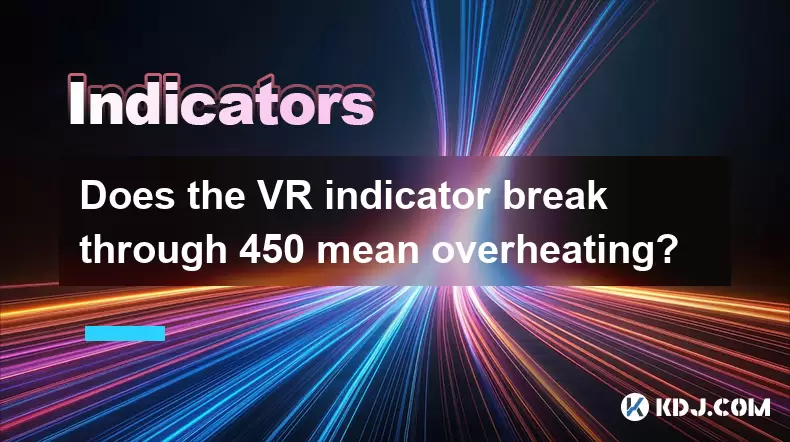
Does the VR indicator break through 450 mean overheating?
Jun 25,2025 at 10:15am
Understanding the VR Indicator in Cryptocurrency AnalysisThe VR indicator, or Volume Ratio, is a technical analysis tool used to assess buying and selling pressure by comparing the volume of up days to down days over a specified period. In cryptocurrency trading, where volatility is high and sentiment shifts rapidly, the VR indicator helps traders ident...
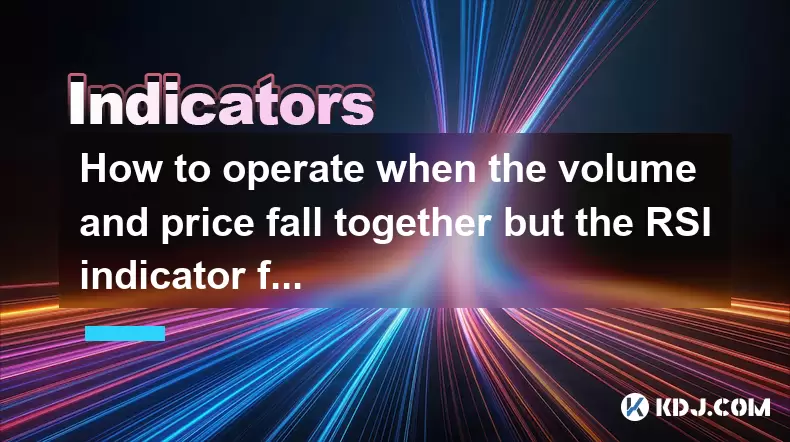
How to operate when the volume and price fall together but the RSI indicator forms a bottom divergence?
Jun 25,2025 at 04:29am
Understanding the Concept of RSI Bottom DivergenceWhen analyzing cryptocurrency price charts, traders often rely on technical indicators to spot potential reversals. One such signal is a bottom divergence in the Relative Strength Index (RSI). This occurs when the price makes a new low, but the RSI does not confirm that low and instead forms a higher low...
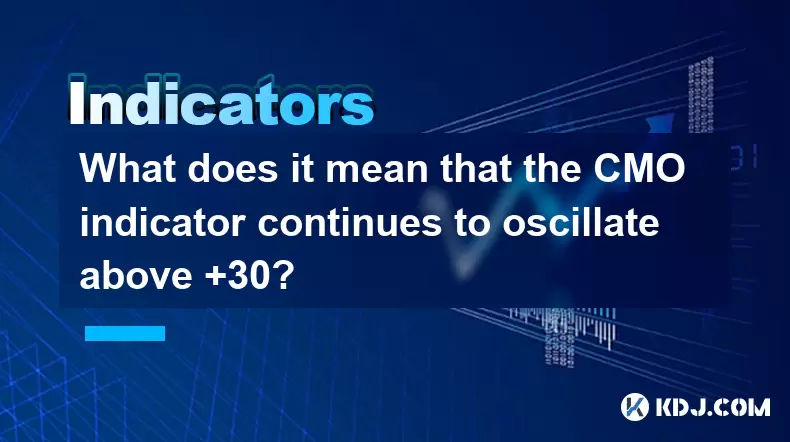
What does it mean that the CMO indicator continues to oscillate above +30?
Jun 25,2025 at 03:29am
Understanding the CMO IndicatorThe Chande Momentum Oscillator (CMO) is a technical analysis tool developed by Tushar Chande to measure momentum in financial markets. In cryptocurrency trading, the CMO helps traders identify overbought or oversold conditions and potential trend reversals. The oscillator ranges from -100 to +100, with values above zero in...
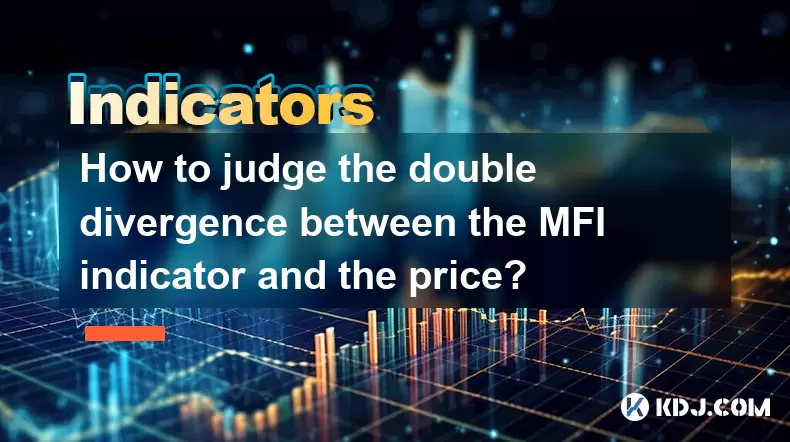
How to judge the double divergence between the MFI indicator and the price?
Jun 25,2025 at 10:00am
Understanding the Basics of the MFI IndicatorThe Money Flow Index (MFI) is a momentum oscillator used in technical analysis to measure the flow of money into or out of an asset. It combines price and volume data to identify overbought or oversold conditions. The MFI ranges from 0 to 100, with values above 80 typically indicating overbought conditions an...
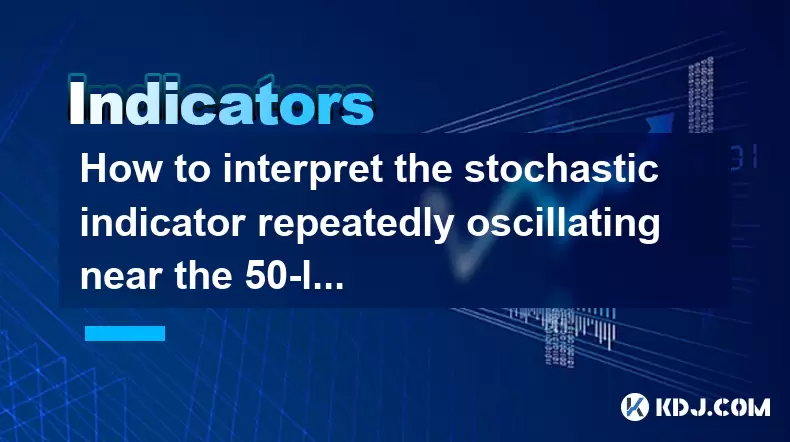
How to interpret the stochastic indicator repeatedly oscillating near the 50-level line?
Jun 25,2025 at 10:28am
Understanding the Stochastic IndicatorThe stochastic indicator is a momentum oscillator commonly used in technical analysis to assess overbought and oversold conditions in financial markets, including cryptocurrency trading. It compares a particular closing price of an asset to a range of its prices over a certain period, typically 14 periods. The indic...

What does it mean that the ATR indicator suddenly doubles after hitting a new low this year?
Jun 24,2025 at 11:57pm
Understanding the ATR IndicatorThe Average True Range (ATR) is a technical analysis indicator used to measure market volatility. Developed by J. Welles Wilder, ATR calculates the average price range between a security’s high and low over a specific period—typically 14 periods. It does not indicate the direction of price movement but rather how volatile ...

Does the VR indicator break through 450 mean overheating?
Jun 25,2025 at 10:15am
Understanding the VR Indicator in Cryptocurrency AnalysisThe VR indicator, or Volume Ratio, is a technical analysis tool used to assess buying and selling pressure by comparing the volume of up days to down days over a specified period. In cryptocurrency trading, where volatility is high and sentiment shifts rapidly, the VR indicator helps traders ident...

How to operate when the volume and price fall together but the RSI indicator forms a bottom divergence?
Jun 25,2025 at 04:29am
Understanding the Concept of RSI Bottom DivergenceWhen analyzing cryptocurrency price charts, traders often rely on technical indicators to spot potential reversals. One such signal is a bottom divergence in the Relative Strength Index (RSI). This occurs when the price makes a new low, but the RSI does not confirm that low and instead forms a higher low...

What does it mean that the CMO indicator continues to oscillate above +30?
Jun 25,2025 at 03:29am
Understanding the CMO IndicatorThe Chande Momentum Oscillator (CMO) is a technical analysis tool developed by Tushar Chande to measure momentum in financial markets. In cryptocurrency trading, the CMO helps traders identify overbought or oversold conditions and potential trend reversals. The oscillator ranges from -100 to +100, with values above zero in...

How to judge the double divergence between the MFI indicator and the price?
Jun 25,2025 at 10:00am
Understanding the Basics of the MFI IndicatorThe Money Flow Index (MFI) is a momentum oscillator used in technical analysis to measure the flow of money into or out of an asset. It combines price and volume data to identify overbought or oversold conditions. The MFI ranges from 0 to 100, with values above 80 typically indicating overbought conditions an...

How to interpret the stochastic indicator repeatedly oscillating near the 50-level line?
Jun 25,2025 at 10:28am
Understanding the Stochastic IndicatorThe stochastic indicator is a momentum oscillator commonly used in technical analysis to assess overbought and oversold conditions in financial markets, including cryptocurrency trading. It compares a particular closing price of an asset to a range of its prices over a certain period, typically 14 periods. The indic...

What does it mean that the ATR indicator suddenly doubles after hitting a new low this year?
Jun 24,2025 at 11:57pm
Understanding the ATR IndicatorThe Average True Range (ATR) is a technical analysis indicator used to measure market volatility. Developed by J. Welles Wilder, ATR calculates the average price range between a security’s high and low over a specific period—typically 14 periods. It does not indicate the direction of price movement but rather how volatile ...
See all articles
























































































